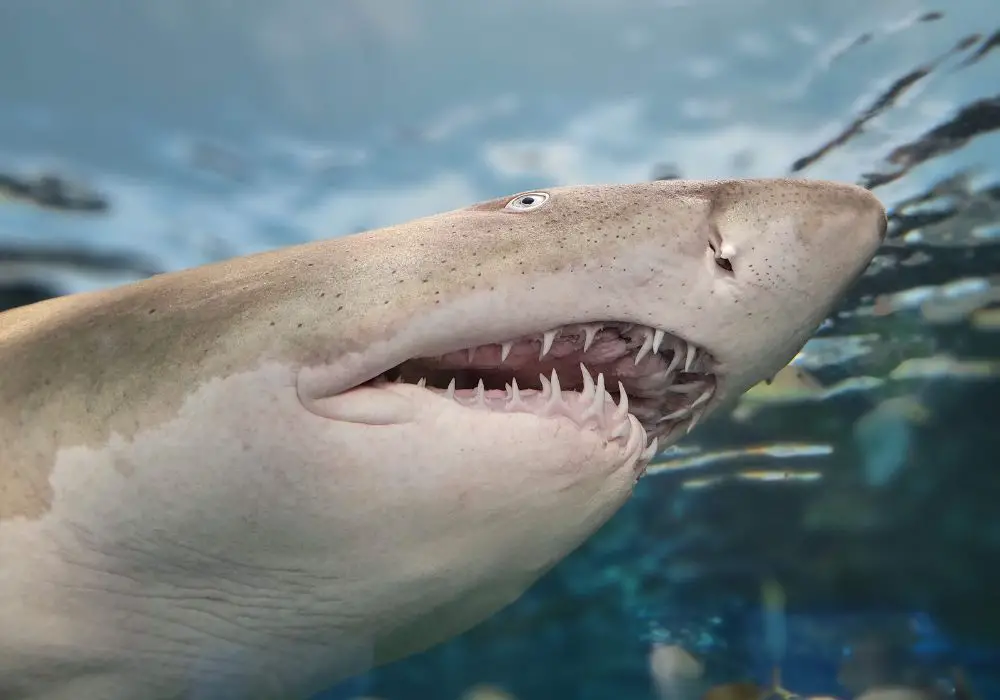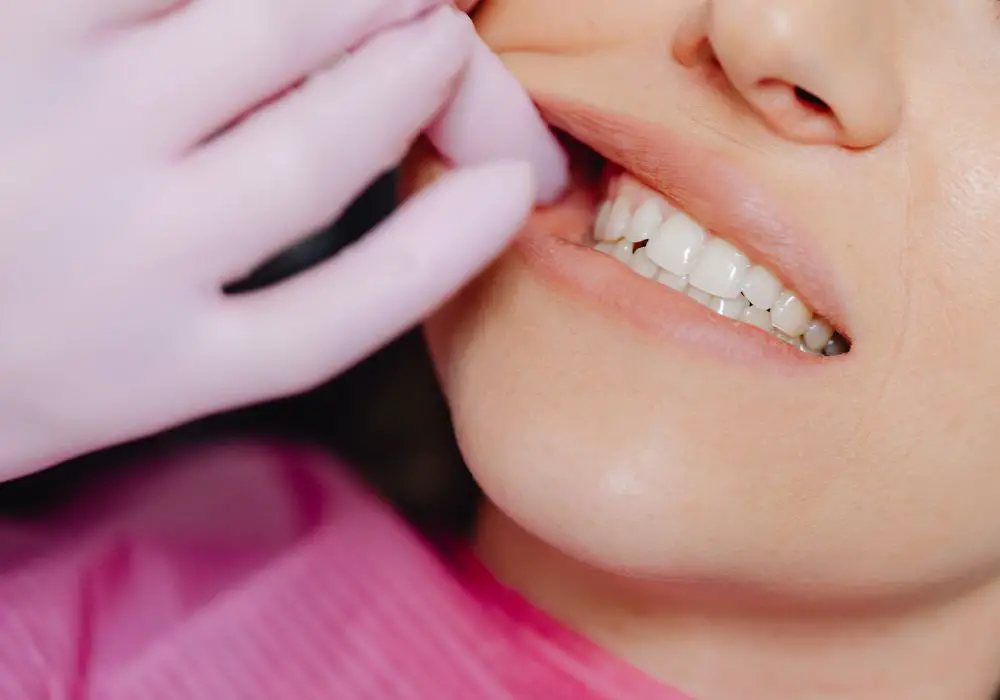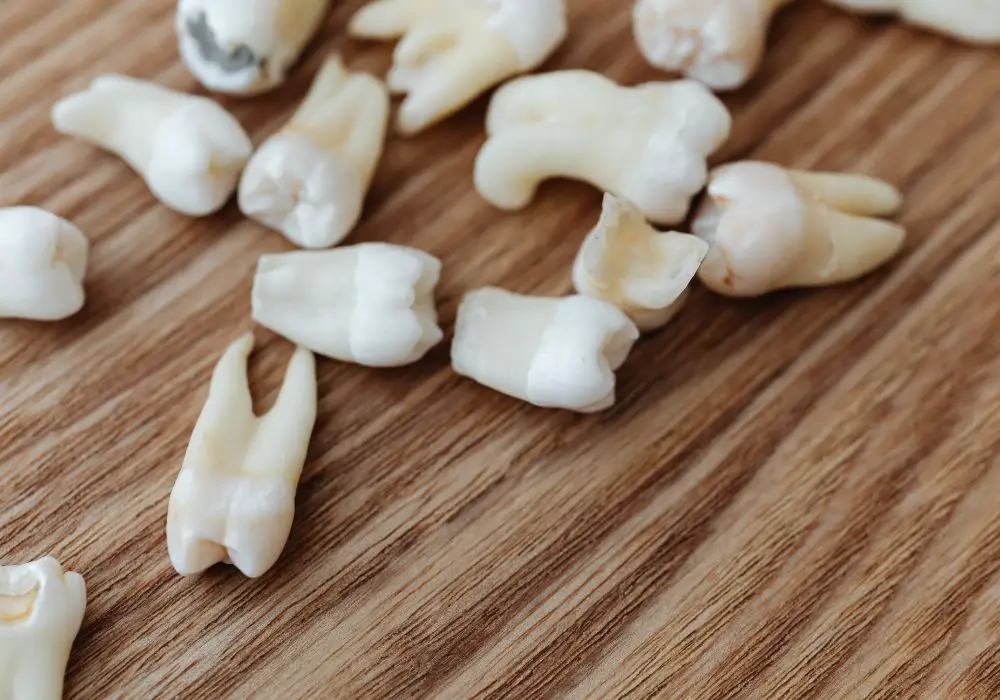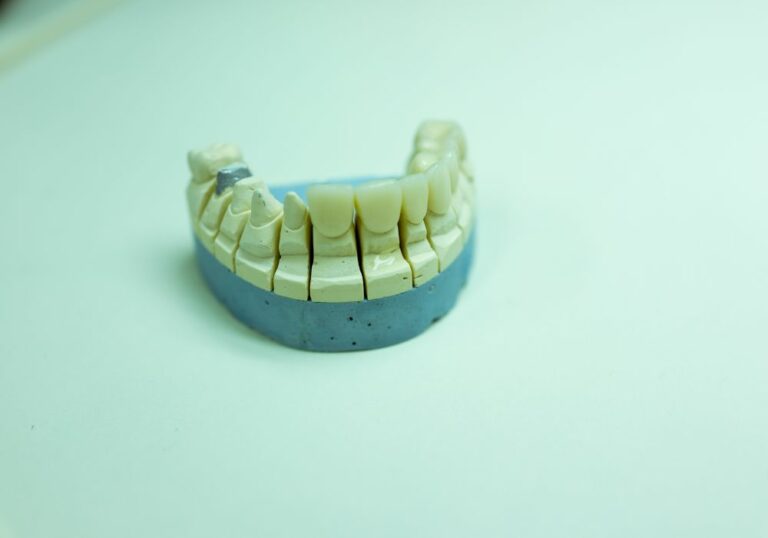Losing teeth is a routine part of life for humans. Yet sharks regrow teeth endlessly to maintain their powerful bite. What key differences prevent humans from regenerating teeth every few weeks like sharks? Understanding the biological contrasts between human and shark teeth could bring us closer to treating tooth loss.
Tooth Basics – Human vs Shark

Human and shark teeth have fundamental differences in structure, development, and attachment to the jaw. These contrasts enable the constant tooth turnover seen in sharks.
Tooth Structure
- Human teeth have a complex structure composed of enamel, dentin, pulp, and one or more roots. The hard enamel coats the visible crown. Dentin makes up the bulk of each tooth, surrounding the inner pulp and nerve. The root or roots anchor each tooth in the jawbone via the periodontal ligament.
- Shark teeth are much simpler, consisting of an enamel cap over dentin and pulp. They lack true tooth roots anchoring them into jawbone like human teeth. Shark teeth are more akin to disproportionately large, pointed versions of the crown area of human teeth.
Attachment to Jaws
- Human teeth are deeply anchored into the alveolar bone of the jaws by the roots. Periodontal ligaments connect the tooth roots to the bone, stabilizing and attaching each tooth firmly into its socket. Individual teeth are held tightly in place.
- Shark teeth attach to the surface of the jaws with soft connective tissue and ligaments. They are not truly socketed and rooted in the jawbone like human teeth. This loose attachment allows shark teeth to be shed and replaced continually.
- The conveyor belt-like arrangement of constantly regenerating replacement shark teeth attaches them loosely but effectively enough for feeding. Human teeth do not regrow this way.
Tooth Generations and Development
- Humans develop one set of baby teeth and one set of adult teeth. We begin losing our 20 baby teeth around age 6, completing the replacement with 32 permanent teeth by early teens. No new tooth generations form after the adult teeth finish development.
- Sharks continuously regenerate new tooth generations throughout life. Developing teeth form in rows underlying functioning teeth. Conveyor belt mechanisms move new teeth forward from the back of the jaw as old teeth are shed. An endless supply of replacement teeth is available.
In summary, the simpler structure, looser attachment, and ongoing propagation of new tooth generations enable sharks to perpetually regrow teeth. Human teeth are too firmly rooted and complex, with finite tooth development ending in adulthood.
Dental Stem Cells and Tooth Generation
The continuous creation of new shark teeth relies on a supply of specialized dental stem cells not present in humans.
Shark Dental Stem Cells
- Sharks possess dental lamina stem cells situated in a conveyor belt-like arrangement inside the jaw cartilage. These stem cells constantly differentiate into new teeth within tooth families that migrate forward.
- The dental lamina provides an endless source of new stem cells and resulting teeth. Some estimates suggest each shark tooth gets replaced every 1-2 weeks on average.
- These unique stem cells are the engine powering sharks’ amazing tooth regeneration abilities. Humans lack comparable dental stem cells.
Human Dental Stem Cells
- Humans do have some dental stem cells facilitating baby and adult teeth development. However, they are found in limited numbers encircling baby teeth and permanent teeth as they initially form.
- These specialized stem cells are active during tooth development but are mostly depleted as adult teeth finish growing in. No new dental stem cells continually form for human teeth.
- A few dental stem cells may remain in adults, but far too few to recreate anything resembling sharks’ endless tooth propagation.
In essence, sharks are gifted with an infinite supply of robust dental stem cells. Humans lose their finite dental stem cells after finishing permanent tooth development, leaving adults without these crucial cells.
Evolutionary Perspectives on Shark and Human Teeth

Examining the evolutionary origins of shark and human dentition provides further insight into how these differences arose between the species over millions of years.
Shark Dentition Evolution
- Primitive early sharks from 400+ million years ago had simpler tooth structure than modern sharks. Their teeth were likely not arranged in the conveyor belt-like rows for continual replacement seen in today’s sharks.
- Around 150 million years ago, the direct ancestors of modern shark species emerged. By this time, evidence shows sharks evolved multiple tooth rows with new teeth developing underneath and migrating forward.
- Sharks retained and refined the capabilities for ongoing dental stem cell presence and simple tooth structure over millions of years of evolution. The ruthless serrated shark bite we know today evolved.
Human Dentition Evolution
- Ancestors in the human lineage evolved more complex tooth anatomy better suited for varied diets. Enamel, dentin, pulp chambers, and tooth roots developed early alongside jaws.
- Multiple sets of teeth emerged in human ancestors to accommodate growth rather than continuous endlessly replaced teeth. Adult teeth evolved more roots and stabilization for function rather than stem cell regeneration.
- Humans and shark ancestors took different evolutionary paths – sharks retained dental stem cells and simple teeth while humans traded that for complex, stable dentition.
In summation, sharks and humans evolved distinct tooth advantages based on their lineages’ survival needs, leading to the vast differences we see today.
Current Research on Regrowing Human Teeth
While humans will likely never match sharks, current research approaches are making progress towards limited tooth regeneration in people using dental stem cells.
Stimulating Existing Stem Cells
- A minority of dental stem cells do remain in adult human teeth, predominantly remaining quiet and inactive.
- Some studies have focused on reactivating these cells by applying growth factors like BMP4 or FGF8 to stimulate proliferation and differentiation into tooth-like cells.
- Results are mixed but point towards promise in this approach. More advanced bioengineering of natural or artificial growth factors could amplify the capabilities of remaining adult human dental stem cells.
Implanting Stem Cell Bundles
- Other research has worked on implanting clusters of cultured dental epithelial and mesenchymal stem cells encased within scaffolds into damaged teeth.
- This led to some increased dentin and pulp regeneration in early studies. However, fully restoring the complex structure of whole teeth has not yet been achieved.
- Isolating and growing the limited adult dental stem cells, then implanting them back strategically could enhance natural tooth repair a small amount at a time.
Scaffolds Seeded with Stem Cells
- Some promising early studies seeded dental mesenchymal stem cells from mice onto biocompatible scaffolds. This led to tooth-like bundles forming with primitive roots, crowns, and periodontal ligaments.
- Current limitations are small regenerated size and lack of enamel. Advancing scaffolding materials and cell combinations could eventually yield whole regenerated teeth.
- Custom scaffolds seeded with a patient’s own cultured dental stem cells may offer future regenerative therapy, even if limited compared to sharks’ capacities.
In summary, while endless shark-like dental regeneration is likely implausible for humans, current stem cell activation approaches show futurology promise for at least some tooth repair or regeneration.
Outlook for Regrowing Human Teeth

What are the realistic possibilities for humans regrowing some teeth compared to the endless tooth generation of sharks?
Near Future Possibilities
- Activating the small natural pool of adult human dental stem cells via bioengineered growth factors is achievable in the near future. At most this may allow partial regeneration like filling cavities.
- Strategic implantation of cultured dental stem cell bundles could also gradually make headway towards significant natural tooth repair, not complete regeneration.
Longer Term Potential
- Seeded scaffolding tailored to patients and cell sources may one day reach full tooth regeneration, but likely on a limited cycle compared to sharks.
- If identification of crucial genetic pathways for endless shark dental stem cells continues, gene therapy could possibly activate human tooth regeneration long-term. This is very speculative but potentially imaginable.
Significant Hurdles
- Sharks benefit from millions of years of evolution optimizing dental stem cells. Comparable genetic engineering in humans is very complex and long-term.
- Recreating the endless conveyor belt-like system for propagating and implanting new teeth also poses massive challenges for quality of life during the process.
In conclusion, humans have future promise for some level of tooth regeneration using dental stem cells, but likely not at the endless level sharks enjoy. Even a few regrown teeth could profoundly improve dental health though.
Frequently Asked Questions
Why can sharks regrow teeth and humans can’t?
Sharks have specialized dental stem cells and simpler tooth structure allowing endless regeneration. Human teeth are complex with roots, and lose dental stem cells after permanent teeth grow in.
How are shark teeth different than human teeth?
Shark teeth are attached to the jaw by soft tissue, while human teeth have deep roots embedded in bone. Shark teeth are also simpler in structure and arranged in conveyor belt-like rows.
How do shark teeth regrow?
Sharks have dental lamina stem cells that continuously produce new teeth. These stem cells are situated in rows that convey new teeth forward to replace old ones that have fallen out.
Do adult human teeth have any stem cells?
Yes, adult human teeth retain tiny amounts of stem cells. But these limited stem cells are not enough to regenerate full, functional teeth like in sharks.
What are some potential solutions for regrowing human teeth?
Stimulating existing dental stem cells, implanting stem cell bundles, using biocompatible scaffolds, and even genetic modification hold future promise for human tooth regeneration.






